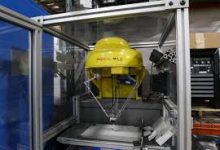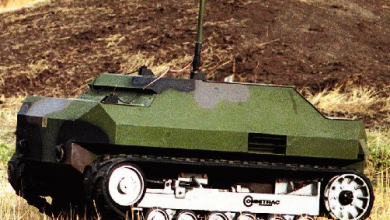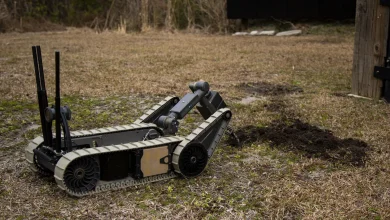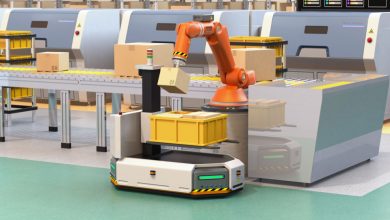Revolutionizing Modern Manufacturing
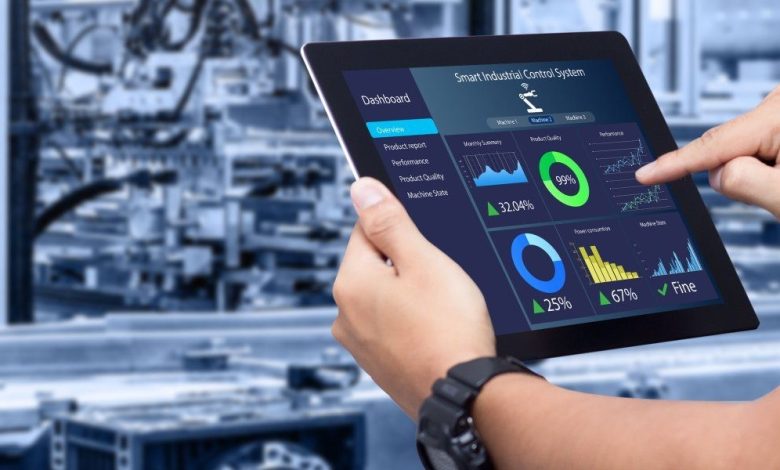
Introduction:
In the vast landscape of industrial automation, articulated robotics stands tall as a beacon of innovation and efficiency. These robotic marvels, with their human-like flexibility and precision, have reshaped manufacturing processes across diverse industries. From automotive assembly lines to electronics manufacturing facilities, articulated robots have become indispensable assets, driving productivity, quality, and competitiveness. In this comprehensive blog, we delve into the world of articulated robotics, exploring their features, applications, and transformative impact on modern manufacturing.
Understanding Articulated Robotics:
Articulated robots, often referred to as robotic arms, are mechanical devices composed of multiple segments (links) connected by rotary joints. These joints provide the robot with a wide range of motion, allowing it to navigate three-dimensional space with precision. Inspired by the human arm, articulated robots typically feature six or more degrees of freedom, enabling them to perform complex tasks with agility and accuracy.
Features of Articulated Robots:
Articulated robots possess several key features that make them invaluable assets in manufacturing:
Flexibility: With their multi-axis movement capabilities, articulated robots can maneuver through intricate paths and reach diverse points within their workspace.
Precision: Equipped with advanced control systems and sensors, articulated robots offer precise positioning and motion control, ensuring accuracy and repeatability in tasks.
Payload Capacity: Articulated robots come in various sizes and configurations, allowing them to handle payloads ranging from lightweight components to heavy materials.
Reach and Workspace: Articulated robots boast a large working envelope, enabling them to access distant points and cover extensive areas within their operational range.
Speed: Despite their size and payload capacity, articulated robots can execute tasks swiftly and efficiently, contributing to shorter cycle times and increased productivity.
Applications of Articulated Robotics:
Articulated robots find applications across a wide spectrum of industries, including:
Material Handling: Articulated robots excel in tasks such as picking, placing, and transferring materials and components in assembly lines, warehouses, and distribution centers.
Welding: In automotive, aerospace, and metal fabrication industries, articulated robots are deployed for various welding operations, including spot welding, arc welding, and laser welding.
Painting and Coating: Articulated robots play a crucial role in applying paint, coatings, and finishes to surfaces in automotive, aerospace, and consumer goods manufacturing, ensuring uniform coverage and quality.
Assembly: With their precision and dexterity, articulated robots are instrumental in assembling components, parts, and sub-assemblies in electronics, automotive, and appliance manufacturing.
Inspection and Testing: Articulated robots perform quality control inspections, measurement, and testing tasks in manufacturing facilities, detecting defects, verifying dimensions, and ensuring product quality.
Advantages of Articulated Robotics:
Articulated robots offer numerous advantages over manual labor and other types of automation:
Automation: By automating repetitive and labor-intensive tasks, articulated robots reduce the reliance on manual labor, minimizing human error and increasing efficiency.
Efficiency: Articulated robots enhance productivity and throughput by performing tasks quickly, accurately, and consistently, leading to shorter cycle times and higher output.
Safety: By handling hazardous or ergonomically challenging tasks, articulated robots improve workplace safety, reducing the risk of injury to human workers.
Flexibility: Articulated robots can be reprogrammed and reconfigured to adapt to changing production requirements, facilitating rapid setup and changeover between tasks.
Cost-effectiveness: Despite the initial investment, articulated robots offer a compelling return on investment (ROI) over time, thanks to increased productivity, reduced labor costs, and improved product quality.
Conclusion:
In conclusion, articulated robotics represents a pinnacle of innovation and efficiency in modern manufacturing. These versatile and powerful robotic arms have transformed production processes across industries, driving productivity, quality, and competitiveness. As technology continues to advance, articulated robots will play an increasingly vital role in shaping the future of manufacturing. Understanding the capabilities and benefits of articulated robotics is essential for businesses seeking to leverage automation to stay ahead in the dynamic landscape of industrial automation.
Exploring the Diverse World of Articulated Robotics: Types, Features, and Applications
Introduction:
Articulated robotics stands as a cornerstone of modern manufacturing, offering versatility, precision, and efficiency in various industrial applications. These robotic arms, with their multiple joints and degrees of freedom, are capable of performing a wide range of tasks with agility and accuracy. In this comprehensive blog, we delve into the different types of articulated robotics, exploring their unique features, capabilities, and real-world applications.
6-Axis Articulated Robots:
The 6-axis articulated robot is perhaps the most common type of robotic arm, characterized by six degrees of freedom (DOF) provided by six rotary joints. This configuration allows the robot to move freely in three-dimensional space, making it highly versatile and adaptable to a wide range of tasks. Some key features and applications of 6-axis articulated robots include:
Flexibility:
The six joints provide a wide range of motion, enabling the robot to reach diverse points within its workspace.
Precision:
With advanced control systems and sensors, 6-axis robots offer precise positioning and motion control, ensuring accuracy in tasks such as welding, assembly, and material handling.
Applications:
6-axis articulated robots find applications in automotive manufacturing, electronics assembly, aerospace, and medical device production, performing tasks such as welding, painting, assembly, and inspection.
Unlocking Efficiency and Precision: The Power of 6-Axis Articulated Robots in Manufacturing
Introduction:
In the realm of industrial automation, 6-axis articulated robots stand as true workhorses, driving productivity, precision, and versatility in manufacturing processes. These robotic marvels, with their multiple degrees of freedom and advanced capabilities, have become indispensable assets across diverse industries. In this comprehensive blog, we delve into the world of 6-axis articulated robots, exploring their features, applications, and transformative impact on modern manufacturing.
Understanding 6-Axis Articulated Robots:
6-axis articulated robots, also known as robotic arms, are mechanical devices composed of multiple segments (links) connected by rotary joints. This configuration provides the robot with six degrees of freedom (DOF), allowing it to move freely in three-dimensional space. The six joints enable the robot to perform a wide range of motions, including rotation, extension, and bending, making it highly versatile and adaptable to various tasks.
Features of 6-Axis Articulated Robots:
6-axis articulated robots possess several key features that make them invaluable assets in manufacturing:
1. Flexibility:
The six degrees of freedom provide the robot with a wide range of motion, enabling it to access different points within its workspace and perform complex tasks with agility.
2. Precision:
Equipped with advanced control systems and sensors, 6-axis robots offer precise positioning and motion control, ensuring accuracy and repeatability in tasks such as welding, assembly, and material handling.
3. Payload Capacity:
Despite their sleek design, 6-axis robots are capable of handling a wide range of payloads, from lightweight components to heavy materials, depending on their size and configuration.
4. Reach and Workspace:
6-axis articulated robots boast a large working envelope, allowing them to access distant points and cover extensive areas within their operational range, making them suitable for tasks in confined or expansive spaces.
5. Speed:
Despite their size and payload capacity, 6-axis robots can execute tasks swiftly and efficiently, contributing to shorter cycle times and increased productivity in manufacturing operations.
Applications of 6-Axis Articulated Robots:
6-axis articulated robots find applications across a wide spectrum of industries, including:
1. Material Handling:
These robots are used for picking, placing, and transferring materials and components in assembly lines, warehouses, and distribution centers.
2. Welding:
In automotive, aerospace, and metal fabrication industries, 6-axis robots are deployed for various welding operations, including spot welding, arc welding, and laser welding.
3. Painting and Coating:
6-axis robots play a crucial role in applying paint, coatings, and finishes to surfaces in automotive, aerospace, and consumer goods manufacturing, ensuring uniform coverage and quality.
4. Assembly:
With their precision and dexterity, 6-axis robots are instrumental in assembling components, parts, and sub-assemblies in electronics, automotive, and appliance manufacturing.
5. Inspection and Testing:
6-axis robots perform quality control inspections, measurement, and testing tasks in manufacturing facilities, detecting defects, verifying dimensions, and ensuring product quality.
Advantages of 6-Axis Articulated Robots:
6-axis articulated robots offer numerous advantages over manual labor and other types of automation:
1. Automation:
By automating repetitive and labor-intensive tasks, 6-axis robots reduce the reliance on manual labor, minimizing human error and increasing efficiency.
2. Efficiency:
6-axis articulated robots enhance productivity and throughput by performing tasks quickly, accurately, and consistently, leading to shorter cycle times and higher output.
3. Safety:
By handling hazardous or ergonomically challenging tasks, 6-axis robots improve workplace safety, reducing the risk of injury to human workers.
4. Flexibility:
6-axis robots can be reprogrammed and reconfigured to adapt to changing production requirements, facilitating rapid setup and changeover between tasks.
5. Cost-effectiveness:
Despite the initial investment, 6-axis robots offer a compelling return on investment (ROI) over time, thanks to increased productivity, reduced labor costs, and improved product quality.
Conclusion:
In conclusion, 6-axis articulated robots represent a pinnacle of innovation and efficiency in modern manufacturing. These versatile and powerful robotic arms have transformed production processes across industries, driving productivity, quality, and competitiveness. Understanding the capabilities and benefits of 6-axis articulated robots is essential for businesses seeking to leverage automation to enhance productivity, quality, and competitiveness in today’s dynamic industrial landscape.
7-Axis Articulated Robots:
7-axis articulated robots, also known as 7-DOF robots, feature an additional axis of rotation, typically in the wrist or forearm section. This extra degree of freedom enhances the robot’s dexterity and maneuverability, allowing it to access tight spaces and perform complex motions. Some key features and applications of 7-axis articulated robots include:
Mastering Precision and Flexibility: A Deep Dive into 7-Axis Articulated Robots
Introduction:
In the realm of industrial automation, 7-axis articulated robots stand out as technological marvels, offering unparalleled precision, dexterity, and versatility in manufacturing processes. These robotic arms, equipped with an additional degree of freedom compared to their 6-axis counterparts, have revolutionized various industries with their ability to perform complex tasks with exceptional accuracy. In this comprehensive blog, we explore the world of 7-axis articulated robots, uncovering their features, applications, and transformative impact on modern manufacturing.
Understanding 7-Axis Articulated Robots:
7-axis articulated robots, also known as 7-DOF robots, are mechanical devices composed of multiple segments connected by rotary joints, similar to their 6-axis counterparts. However, what sets them apart is the addition of an extra degree of freedom, typically in the wrist or forearm section. This additional axis of rotation enhances the robot’s dexterity and maneuverability, allowing it to access tight spaces and perform intricate motions with precision.
Features of 7-Axis Articulated Robots:
7-axis articulated robots possess several key features that make them invaluable assets in manufacturing:
1. Enhanced Dexterity:
The additional degree of freedom provides greater flexibility and range of motion, enabling the robot to handle intricate tasks with precision. This increased dexterity allows for more complex manipulation and assembly tasks that may be challenging for traditional 6-axis robots.
2. Versatility:
7-axis robots are well-suited for applications requiring fine manipulation and intricate motions, such as polishing, deburring, and machining. Their ability to access tight spaces and perform delicate movements makes them ideal for tasks that demand high precision and accuracy.
3. Precision:
Equipped with advanced control systems and sensors, 7-axis robots offer precise positioning and motion control, ensuring accuracy and repeatability in tasks that require intricate movements or manipulation of small parts.
4. Reach and Workspace:
Like their 6-axis counterparts, 7-axis articulated robots boast a large working envelope, allowing them to access distant points and cover extensive areas within their operational range. This enables them to perform tasks in confined or expansive spaces, making them suitable for a wide range of manufacturing environments.
5. Speed:
Despite their additional degree of freedom, 7-axis robots can execute tasks swiftly and efficiently, contributing to shorter cycle times and increased productivity in manufacturing operations.
Applications of 7-Axis Articulated Robots:
7-axis articulated robots find applications across various industries, including:
1. Finishing Operations:
These robots are used for polishing, deburring, and surface finishing tasks in industries such as automotive, aerospace, and metal fabrication, where precision and quality are paramount.
2. Precision Machining:
7-axis robots are employed in CNC machining applications, such as milling, drilling, and engraving, where intricate tool paths and precise movements are required to produce complex parts and components.
3. Part Fitting and Assembly:
With their enhanced dexterity, 7-axis robots excel in tasks that involve the precise fitting and assembly of components, such as electronics assembly, medical device manufacturing, and precision engineering.
4. Inspection and Quality Control:
7-axis articulated robots perform high-precision inspection, measurement, and testing tasks in manufacturing facilities, detecting defects, verifying dimensions, and ensuring product quality.

5. Advanced Manufacturing Processes:
These robots are utilized in advanced manufacturing processes, such as additive manufacturing and 3D printing, where intricate movements and precise positioning are essential to produce complex geometries and structures.
Advantages of 7-Axis Articulated Robots:
7-axis articulated robots offer several advantages over traditional 6-axis robots and manual labor:
1. Enhanced Dexterity:
The additional degree of freedom enables 7-axis robots to perform more complex manipulation tasks with precision, expanding their range of applications and capabilities.
2. Increased Flexibility:
7-axis robots can access tight spaces and perform intricate motions that may be challenging for traditional 6-axis robots, making them suitable for a wider range of tasks and environments.
3. Improved Precision:
With advanced control systems and sensors, 7-axis robots offer precise positioning and motion control, ensuring accuracy and repeatability in tasks that demand high precision and accuracy.
4. Versatility:
7-axis articulated robots are highly versatile and adaptable to various manufacturing applications, from finishing operations and precision machining to part fitting and assembly, offering flexibility and scalability to meet diverse production requirements.
5. Productivity:
Despite their increased complexity, 7-axis robots can execute tasks swiftly and efficiently, contributing to shorter cycle times, increased throughput, and improved productivity in manufacturing operations.
Conclusion:
In conclusion, 7-axis articulated robots represent a significant advancement in industrial automation, offering unmatched precision, dexterity, and versatility in modern manufacturing. With their enhanced capabilities and applications, these robotic marvels continue to push the boundaries of innovation and efficiency, driving productivity, quality, and competitiveness across diverse industries. Understanding the features, applications, and advantages of 7-axis articulated robots is essential for businesses seeking to leverage automation to enhance productivity and performance in today’s dynamic manufacturing landscape.
Enhanced Dexterity:
The additional axis of rotation provides greater flexibility and range of motion, enabling the robot to handle intricate tasks with precision.
Versatility:
7-axis robots are well-suited for applications requiring fine manipulation, such as polishing, deburring, and machining.
Applications:
7-axis articulated robots find applications in industries such as aerospace, automotive, and electronics manufacturing, where precise and delicate tasks are required, such as finishing operations, part fitting, and precision machining.
Collaborative Articulated Robots (Cobots):
Collaborative articulated robots, or coots’, are designed to work alongside human operators in a shared workspace, enabling safe and efficient collaboration. These robots feature advanced safety features and sensors that allow them to detect and respond to human presence, reducing the risk of accidents and injuries. Some key features and applications of collaborative articulated robots include:
Safety:
Cabot’s are equipped with sensors and safety systems that enable them to operate safely in close proximity to human workers, reducing the need for physical barriers or safety cages.
Flexibility:
Collaborative robots are easily programmable and can be quickly reconfigured to perform a variety of tasks, making them ideal for small-batch production and rapid task switching.
Applications:
Cabot’s find applications in industries such as manufacturing, logistics, and healthcare, performing tasks such as assembly, packaging, material handling, and quality inspection alongside human workers.
Dual-Arm Articulated Robots:
Dual-arm articulated robots feature two robotic arms mounted on a single base, each with its own set of joints and degrees of freedom. This configuration allows the robot to perform coordinated tasks with both arms simultaneously, enhancing productivity and efficiency. Some key features and applications of dual-arm articulated robots include:
Coordination:
Dual-arm robots can perform tasks that require coordinated motion between multiple arms, such as assembly, manipulation, and material handling.
Motion and Kinematics:
Cartesian robots leverage the principles of kinematics to achieve precise motion control and manipulation of objects in three-dimensional space. By controlling the movement of linear actuators or belts along orthogonal axes, Cartesian robots can perform a wide range of motions, including translation, rotation, and combinations thereof. Kinematic equations govern the relationship between linear displacements along each axis and the position/orientation of the end-effector, allowing for accurate trajectory planning and path following. Advanced motion planning algorithms enable Cartesian robots to compute the trajectory required to achieve a desired end-effector pose, facilitating tasks such as CNC machining, 3D printing, and packaging.
Applications in Manufacturing:
Cartesian robots find diverse applications across various manufacturing industries, owing to their precision, flexibility, and scalability. In CNC machining, Cartesian robots are used for tasks such as milling, drilling, and routing of materials such as metal, wood, and composites. These robots offer high precision and repeatability, ensuring accurate machining of complex geometries and tight tolerances. In 3D printing, Cartesian robots are employed for additive manufacturing of parts and components using various materials such as plastics, metals, and ceramics. Their precise motion control and large build volume make them well-suited for producing prototypes, tooling, and end-use parts. Additionally, Cartesian robots find applications in packaging, material handling, and logistics for tasks such as palletizing, sorting, and conveyor handling. Their scalability and modularity enable manufacturers to customize robot configurations for different tasks and production requirements.
Advancements in Technology:
Cartesian robots have benefited from advancements in technology, including improvements in materials, actuators, sensors, and control systems. Lightweight materials such as aluminum and carbon fiber have enabled the development of more agile and energy-efficient robots with higher payload capacities. High-performance linear actuators, servo drives, and linear guides provide precise and reliable motion control, enhancing robot performance and productivity. Advanced sensors, such as encoders, proximity sensors, and vision systems, enable Cartesian robots to perceive their environment and respond to changes in real-time, ensuring safe and accurate operation. Moreover, advancements in control algorithms and software enable Cartesian robots to perform complex tasks with speed, accuracy, and adaptability, driving efficiency and innovation in manufacturing processes.
Collaborative and Flexible Automation:
In recent years, there has been a growing trend towards collaborative and flexible automation in manufacturing, with Cartesian robots playing a key role in enabling human-robot collaboration and adaptability. Collaborative Cartesian robots are designed to work alongside humans in shared workspaces, performing tasks that require close interaction and cooperation. These robots are equipped with advanced safety features such as force limiting, speed monitoring, and collision detection, ensuring safe operation in proximity to human workers. Moreover, Cartesian robots offer flexibility and reconfigurability, allowing manufacturers to adapt to changing production requirements and customize robot configurations for different tasks and environments.
Versatility:
With two independent arms, dual-arm robots can handle complex tasks that would be challenging for single-arm robots, such as part feeding, bin picking, and assembly.
Applications:
Dual-arm articulated robots find applications in industries such as automotive manufacturing, electronics assembly, and food processing, performing tasks such as assembly, inspection, packaging, and palletizing.
Conclusion:
In conclusion, articulated robotics offers a diverse array of robot types, each with its own unique features, capabilities, and applications. From 6-axis robots providing versatility and precision to collaborative cobots enabling safe human-robot interaction, articulated robots continue to drive innovation and efficiency in modern manufacturing. Understanding the different types of articulated robotics and their respective strengths is essential for businesses seeking to leverage automation to enhance productivity, quality, and competitiveness in today’s dynamic industrial landscape.

